Awarded The Purple Heart for his valor and heroism, the Berlin resident recalls his time at war, how he felt when fellow troops raised the American flag atop Mount Suribachi and life after returning stateside, which included photographing multiple presidents
Written by Olivia Minzola | Photography by Grant L. Gursky
It was the summer of 1944, and Baltimore native Morris Semiatin had a rather important decision to make. As a young high-school graduate growing up in the midst of a war, he could choose either to enlist in the United States Marine Corps or be drafted to the United States Army. Semiatin, a mere 18 years old, settled on the former. He was then shipped off to Parris Island, SC, where he would attend boot camp and begin training for World War II.
“Boot camp was very tough,” admitted 95-year-old Semiatin, a longtime resident of Berlin. “You didn’t fool around. You didn’t talk back. Your superiors talked to you right in your face, nose to nose. I learned that you take orders, and you follow those orders. If you didn’t do your job right and got the men around you in trouble, you would end up with their fists on your face.”
That same year, Semiatin bounced between Marine Corps bases in South Carolina, California and Hawaii before finally stepping foot on the island of Iwo Jima on February 19, 1945. There, he stood alongside tens of thousands of fellow Marines, many of whom were wounded or killed during the 36-day-long Battle of Iwo Jima.

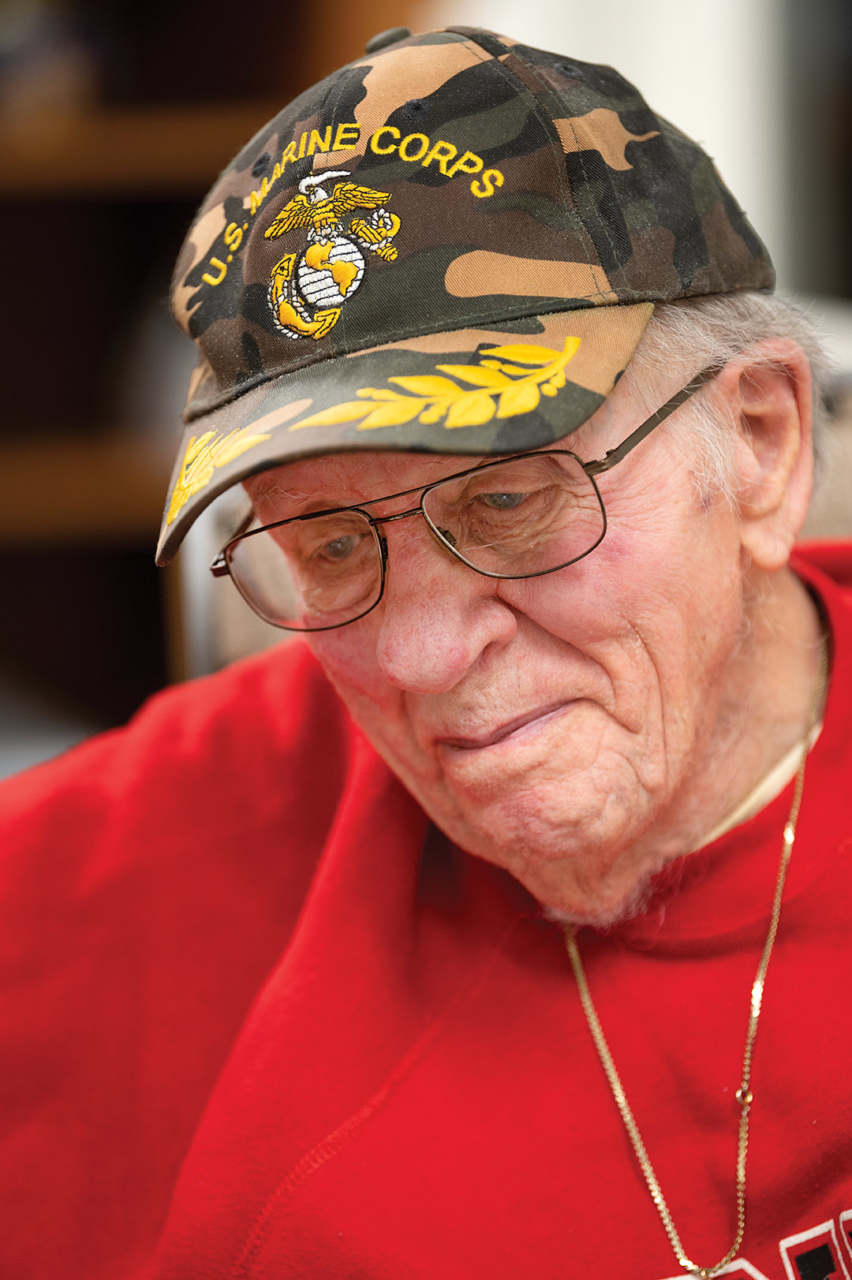
“When we first landed on Iwo Jima, I thought it was just another training session. I didn’t realize it was a real battle,” said Semiatin, who served in the 5th Marine Division. “But as we came ashore, we saw a whole row of stretchers carrying men who were wounded that day.”
Semiatin’s initial duty was to unload cargo ships containing guns, ammunition and assault vehicles. He also worked as a rocketeer, firing bazookas into enemy territory. Later, when he was ordered to join a fighting unit, he became wounded and was awarded a Purple Heart for his actions.
“It was nighttime,” recalled Semiatin. “Flare-gun shells were lighting up the sky. A Japanese soldier stood in front of us, only 25 feet away. He ran right at us and threw a hand grenade into our foxhole. The man on my right lost his legs and had to be carried out. My right leg had been wounded by shrapnel. I can still visualize the whole thing.”
Semiatin also witnessed the raising of the American flag atop Mount Suribachi, one of the most iconic images to be captured during World War II. He even developed a friendship with the reporter behind the photograph, Joe Rosenthal, as well as one of the six flag-raisers, Ira Hamilton Hayes.
“I watched the men put up the first flag, but it was too small. They had to go out to a ship to get a larger flag. That’s the one you see in the picture,” said Semiatin. “When I saw the second flag go up, I thought, I’m not so scared anymore.”
The American flag means a great deal to many veterans, and Semiatin is no exception. “The American flag? It’s my life. It’s my country. I worked hard to defend it. My job was to keep my head down, do my duty and try to stay alive. If I kept my head up, I wouldn’t be sitting here today.”

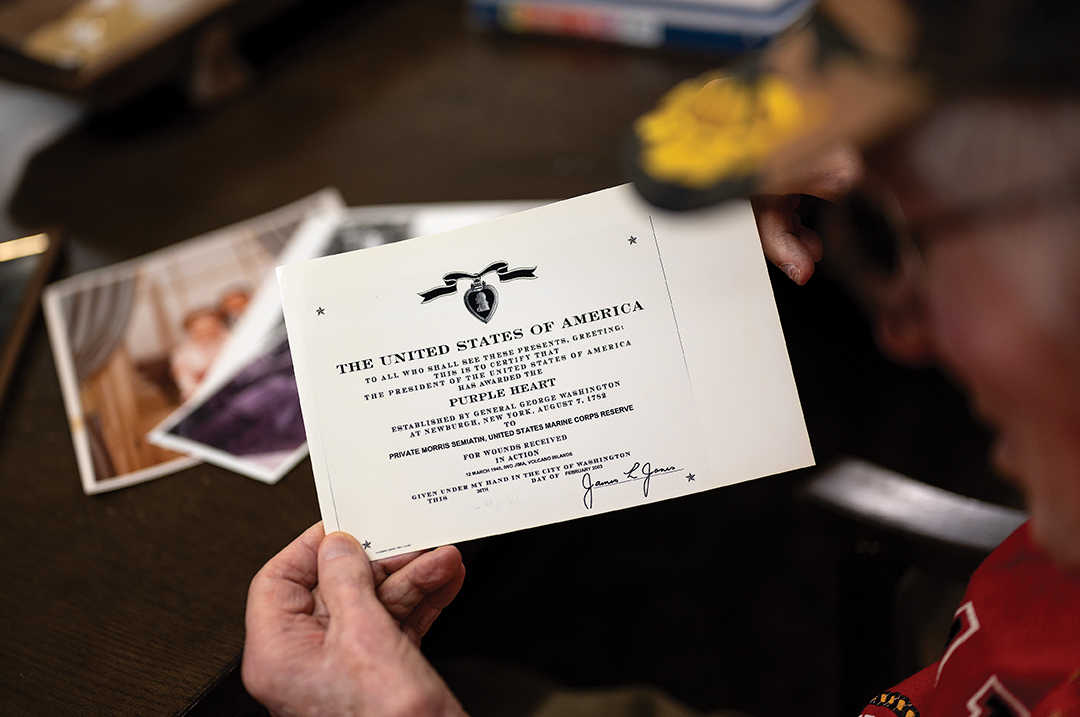
BADGE OF HONOR:
Semiatin was awarded a Purple Heart for wounds he sustained during the Battle of
Iwo Jima.
Upon returning home to the United States, Semiatin went on to become a photographer and was often called to the White House to photograph an array of famous faces, some of which ranged from presidents and world leaders to film and sports stars.
“I spent a lot of time in the White House, even became buddies with Lyndon B. Johnson. I was taking a lot of pictures of him during an interview one day, and he said to me, ‘You’ve had enough pictures. Get out.’ So, I did,” shared Semiatin. “But a few days later, I went to an event, and Johnson was there. He saw me, came over, threw his arm around my shoulder and asked another photographer to take our picture together.” From that day forward, he took countless photos of President Johnson.
The World War II veteran met many noteworthy individuals between 1951 and 1985, including Muhammad Ali, John and Jackie Kennedy, Jimmy and Rosalynn Carter, Ronald Reagan and many others.
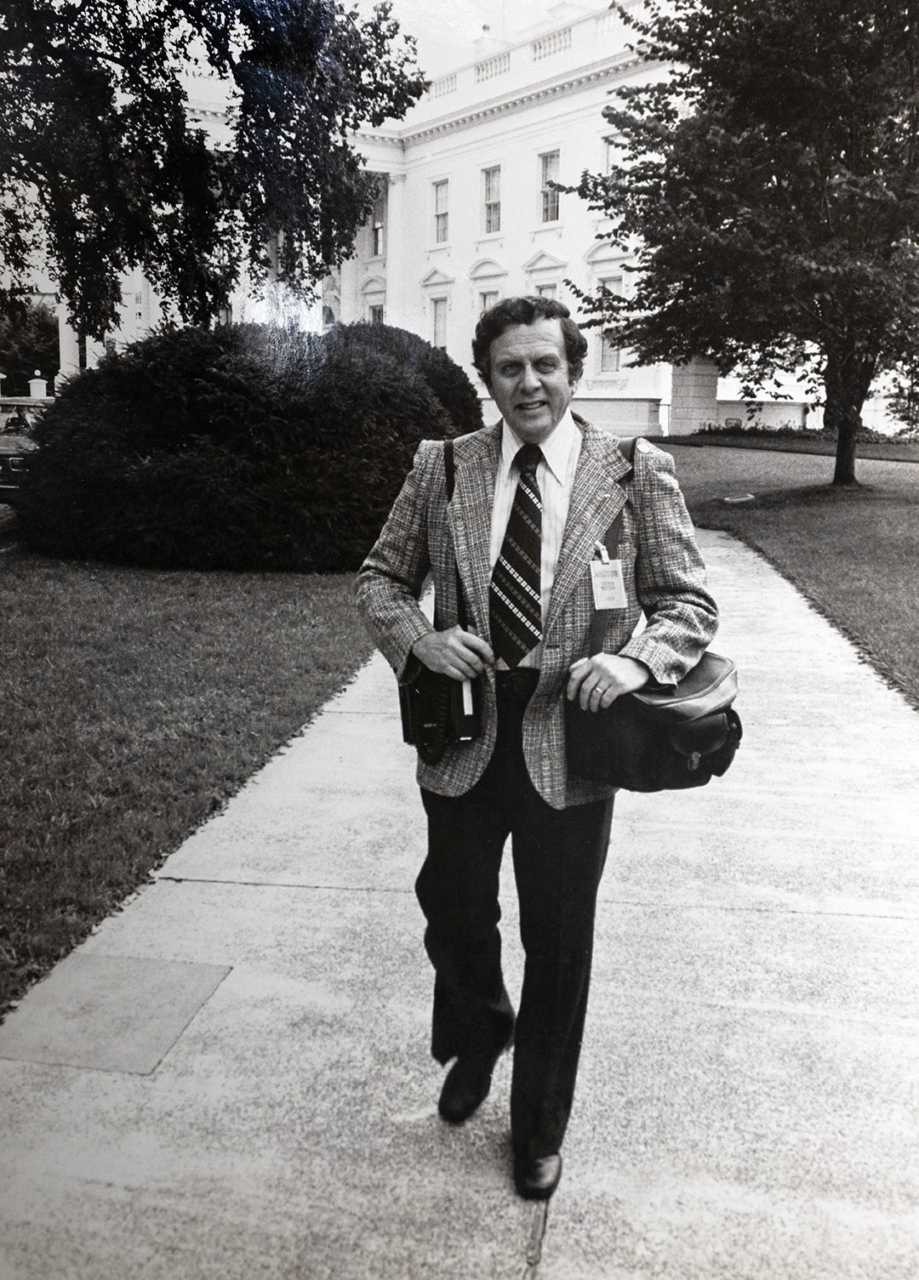
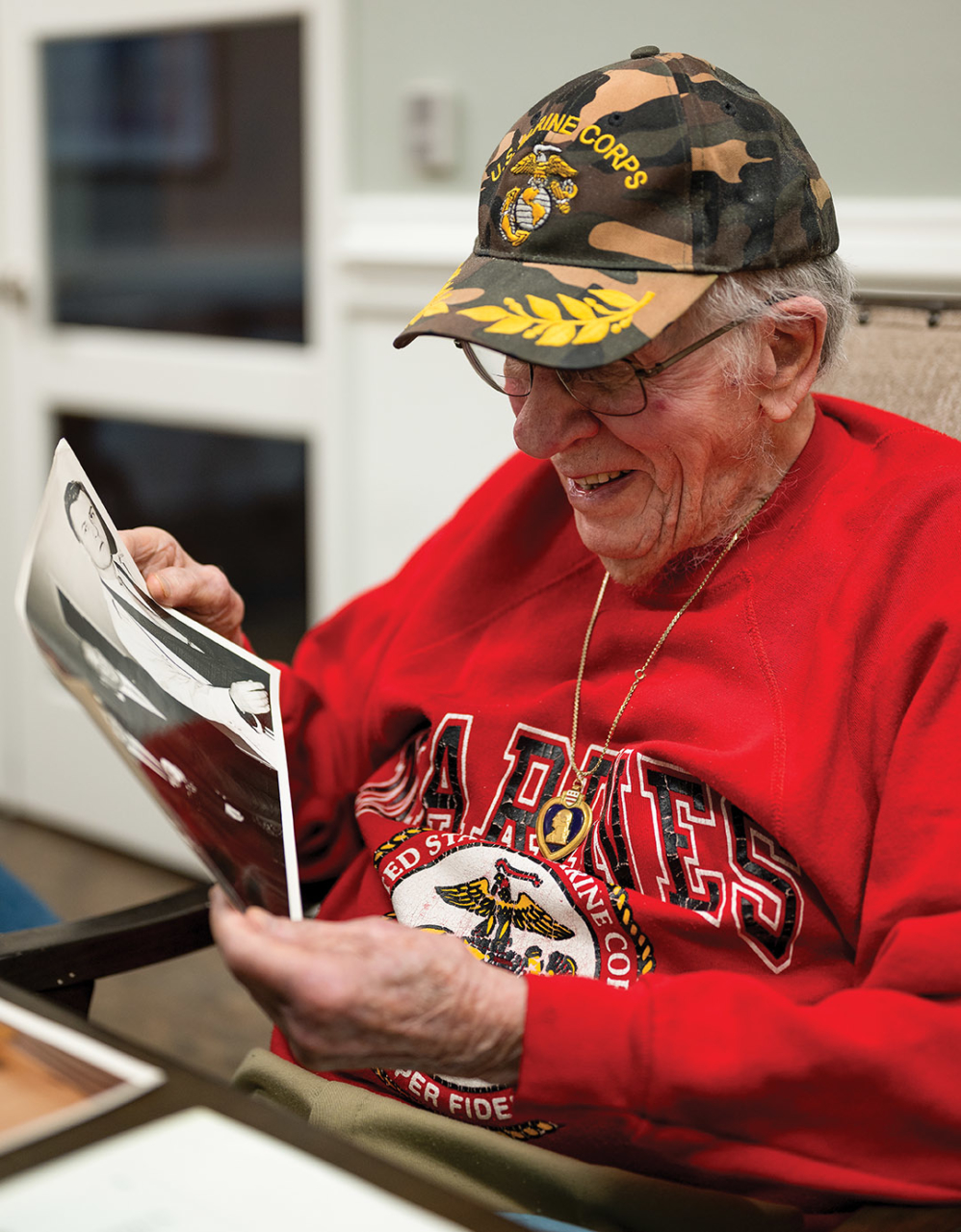


HOME AT LAST:
During his postwar career as a photographer, Semiatin met such luminaries as Muhammad Ali and Presidents Kennedy, Johnson, Carter and Reagan.
Now, as he looks back on his service in the U.S. Marine Corps, Semiatin grapples with his memories of war. At times, he wishes he could forget it all. Yet, he knows that his story is rare and an important one to tell. Lately, he is more than happy to share his personal account of World War II with any who are willing to lend an ear.
As a country and as a community, we must never forget that there are heroes who walk among us. Morris Semiatin is one such hero. CS

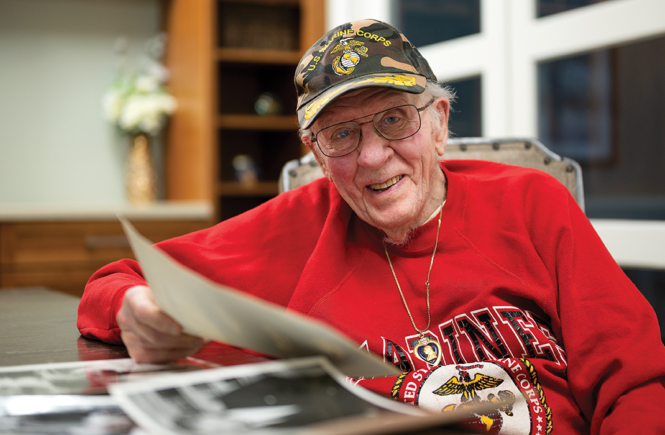
1 comment
How is he these days? Is there anyway people can help him if he needs anything?